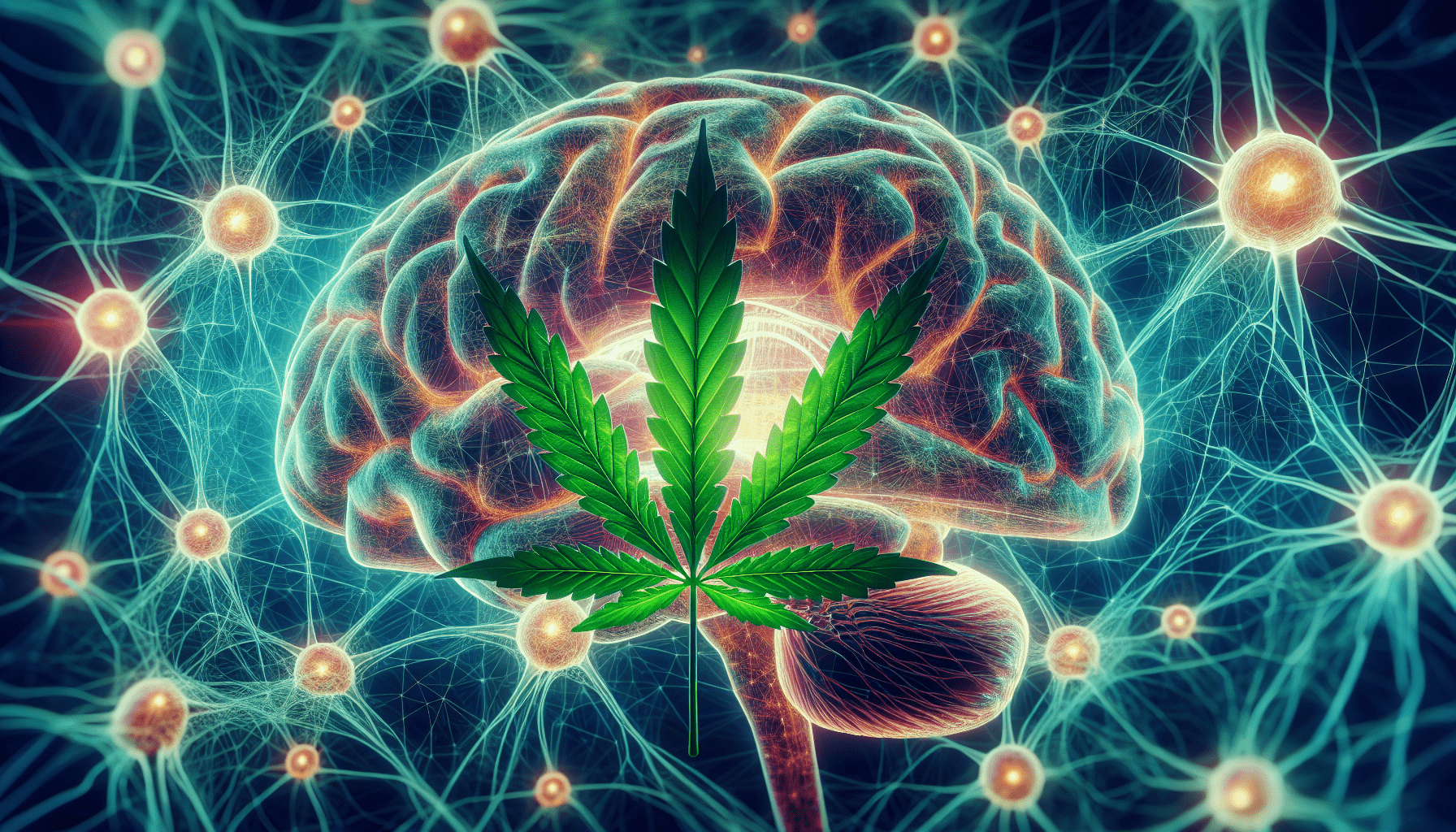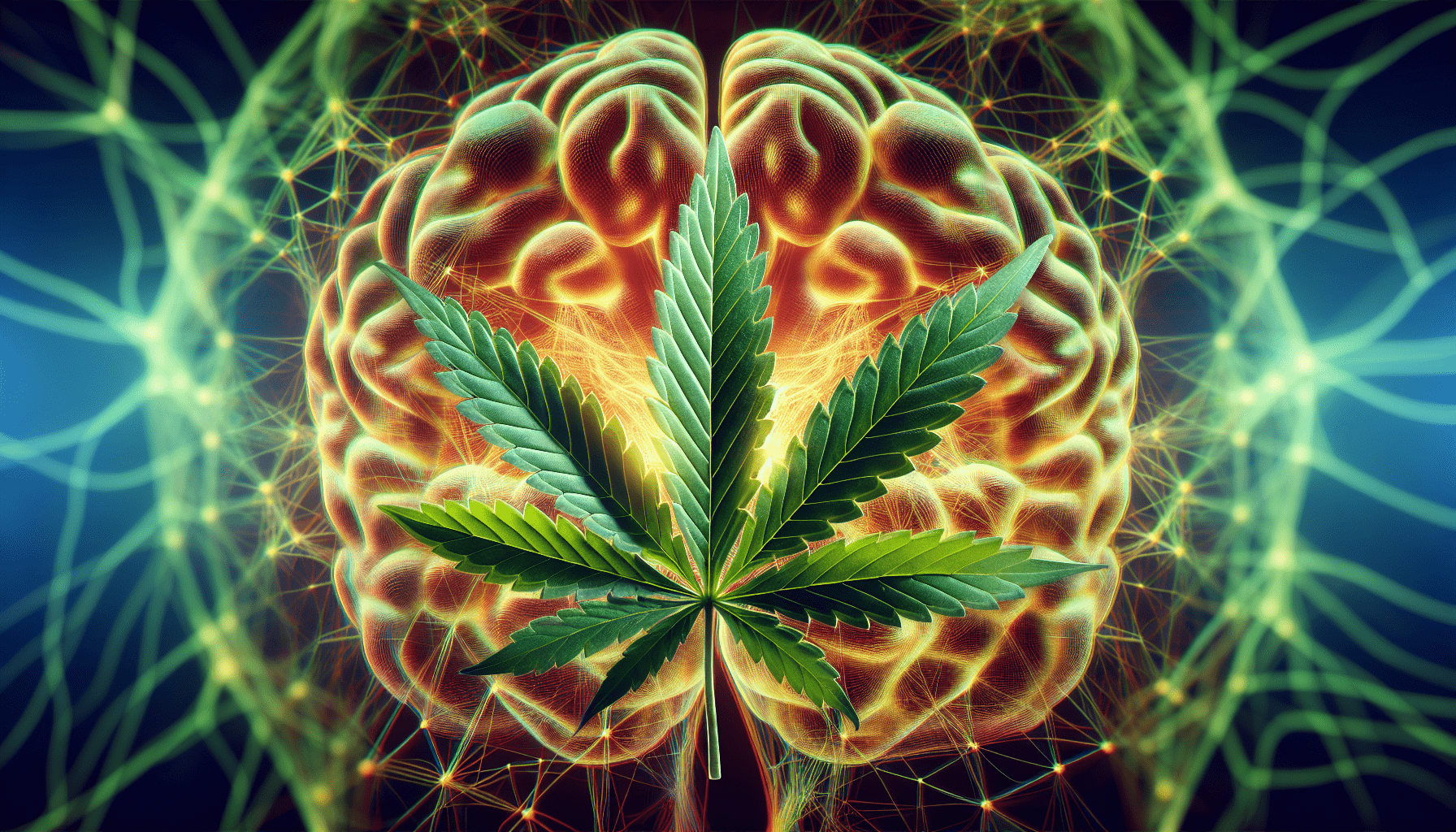In the intriguing world of medical research, a question has arisen: can cannabis be utilized as a potential treatment for neurodegenerative disorders? With the increasing popularity and legalization of cannabis, scientists and healthcare professionals are delving into its potential therapeutic properties. In recent years, there has been growing evidence pointing towards the potential benefits of cannabis in managing neurodegenerative conditions such as Alzheimer’s and Parkinson’s disease. This article aims to explore the current research and shed light on the possibilities offered by cannabis in the realm of neurodegenerative disorder treatment. So, let’s dive in and discover the potential of this remarkable plant!
What are neurodegenerative disorders?
Definition
Neurodegenerative disorders are a group of diseases that primarily affect the neurons in the brain and spinal cord, leading to progressive degeneration and eventually, the loss of these neurons. This results in a decline in cognitive function, movement, and coordination. Some common neurodegenerative disorders include Alzheimer’s disease, Parkinson’s disease, Huntington’s disease, and amyotrophic lateral sclerosis (ALS).
Common types of neurodegenerative disorders
-
Alzheimer’s disease: It is the most common form of dementia and is characterized by the accumulation of abnormal proteins in the brain, leading to memory loss, cognitive decline, and behavioral changes.
-
Parkinson’s disease: This is a movement disorder that affects the dopamine-producing neurons in the brain. It leads to tremors, rigidity, and difficulty in walking and maintaining balance.
-
Huntington’s disease: It is an inherited disorder that causes the progressive breakdown of nerve cells in the brain. This results in uncontrolled movements, cognitive decline, and psychiatric problems.
-
Amyotrophic lateral sclerosis (ALS): ALS affects the nerve cells responsible for controlling voluntary muscle movement. As the disease progresses, individuals may experience muscle weakness, difficulty speaking, and eventually, paralysis.
Understanding the endocannabinoid system
Overview
The endocannabinoid system (ECS) is a complex network of receptors, enzymes, and endocannabinoids that are found throughout the body, including the brain. It plays a crucial role in regulating various physiological processes such as pain perception, mood, appetite, and inflammation.
Roles of the endocannabinoid system in the body
The ECS helps maintain homeostasis by modulating the release of neurotransmitters and regulating immune responses. It consists of two main types of receptors: CB1 receptors, predominantly found in the brain and central nervous system, and CB2 receptors, primarily located in immune cells.
How cannabinoids interact with the endocannabinoid system
Cannabinoids, the chemical compounds found in cannabis, can interact with the ECS by binding to the CB1 and CB2 receptors. This interaction can result in various effects, including pain relief, reduction in inflammation, and modulation of neuronal activity. The cannabinoids can either mimic the natural endocannabinoids produced by our body or interact with the receptors in a different way.
The potential therapeutic effects of cannabis
Analgesic properties
Cannabis has been used for centuries to alleviate pain, and both THC and CBD, the two most well-known cannabinoids, have shown analgesic properties. They can modulate pain perception by affecting the transmission of pain signals in the brain and spinal cord.
Anti-inflammatory properties
Inflammation is a common feature of many neurodegenerative disorders. Studies have demonstrated that cannabinoids, particularly CBD, exhibit anti-inflammatory effects by reducing the production of pro-inflammatory cytokines and other immune mediators.
Neuroprotective effects
Cannabinoids have shown promise in protecting neurons from damage and promoting their survival. They can reduce oxidative stress, inhibit excitotoxicity, and regulate the release of neurotransmitters, all of which contribute to the neuroprotective effects.
Antioxidant effects
Oxidative stress, which occurs when there is an imbalance between the production of free radicals and the body’s ability to counteract their harmful effects, has been implicated in the development and progression of neurodegenerative disorders. Cannabinoids, particularly CBD, have been found to have antioxidant properties and can help mitigate the damage caused by oxidative stress.
Evidence from preclinical studies
Animal models and neurodegenerative disorders
Preclinical studies conducted on animal models have provided valuable insights into the potential therapeutic effects of cannabinoids on neurodegenerative disorders. These studies have shown positive results in terms of reducing neuroinflammation, improving motor function, and enhancing cognitive performance.
Cannabinoids and their effects on neuroinflammation
Neuroinflammation plays a crucial role in the progression of neurodegenerative diseases. Cannabinoids, through their anti-inflammatory properties, can modulate the immune response in the brain and reduce the release of pro-inflammatory molecules, thereby potentially slowing down the neurodegenerative processes.
Neuroprotective properties of cannabinoids
Cannabinoids have demonstrated neuroprotective effects in various preclinical studies. They can act as a protective shield for neurons by preventing cell death, reducing oxidative stress, and modulating excitotoxicity, which is the excessive stimulation of neurons leading to their damage.
Clinical studies on cannabis and neurodegenerative disorders
Overview of available clinical research
Although the preclinical evidence is promising, the clinical research on the use of cannabis for treating neurodegenerative disorders is still limited. Most of the available studies have focused on symptoms management, such as pain, sleep disturbances, and spasticity.
Results from studies on specific neurodegenerative disorders
Some clinical studies have reported positive outcomes in terms of symptom relief and improved quality of life in patients with neurodegenerative disorders. For example, in a small pilot study, patients with Parkinson’s disease experienced a significant reduction in motor symptoms and improved sleep after using cannabis.
Challenges and limitations in conducting clinical trials
There are several challenges associated with conducting clinical trials involving cannabis. These include legal and regulatory obstacles, difficulties in obtaining standardized cannabis products, variability in dosing, and the lack of large-scale, long-term studies. Additionally, the complex nature of neurodegenerative disorders and the heterogeneity of patient populations make it difficult to draw definitive conclusions.
Exploring the use of specific cannabinoids
Delta-9-tetrahydrocannabinol (THC) and its therapeutic potential
THC is the primary psychoactive compound in cannabis and has been studied for its potential therapeutic effects. It has shown promise in managing symptoms such as pain, muscle spasticity, and nausea. However, its psychoactive properties may limit its widespread use, particularly in older adults.
Cannabidiol (CBD) and its effects on neurodegenerative disorders
CBD, a non-psychoactive compound, has gained significant attention for its potential therapeutic benefits in neurodegenerative disorders. It has shown anti-inflammatory, antioxidative, and neuroprotective properties, making it an attractive candidate for further research. Some studies have reported improved quality of life and reduced behavioral symptoms in patients with Alzheimer’s disease and Parkinson’s disease.
Other cannabinoids and their potential applications
Apart from THC and CBD, there are several other cannabinoids present in cannabis that may have therapeutic potential. For example, cannabigerol (CBG) has shown anti-inflammatory properties, and cannabichromene (CBC) has demonstrated neuroprotective effects in preclinical studies. However, further research is needed to understand their mechanisms of action and potential applications in the treatment of neurodegenerative disorders.
Administration methods and dosage considerations
Different forms of cannabis
Cannabis can be consumed in various forms, including smoking or vaporizing the dried flowers, consuming edibles or oils, or applying topical creams. Each method has its pros and cons in terms of onset time, duration of effects, and bioavailability.
Oral ingestion
Oral ingestion of cannabis, such as consuming edibles or oils, offers a convenient and discreet method of administration. However, the effects may be delayed as the cannabinoids need to be metabolized in the digestive system before entering the bloodstream.
Inhalation
Inhaling cannabis through smoking or vaporizing allows for rapid absorption of cannabinoids into the bloodstream through the lungs. This method offers quicker onset of effects but may also increase the risk of respiratory issues associated with smoking.
Topical application
Topical application of cannabis-infused creams or lotions allows for localized relief from symptoms such as pain or inflammation. However, cannabinoids applied topically may not enter the bloodstream and therefore may have limited systemic effects.
Finding the appropriate dosage
Finding the appropriate dosage of cannabis for treating neurodegenerative disorders can be challenging due to the lack of standardized dosing guidelines. It is recommended to start with a low dose and gradually increase until the desired effects are achieved, while monitoring for any potential side effects.
Legal and regulatory considerations
Current legal status of cannabis
The legal status of cannabis varies widely across different countries and regions. While some countries have legalized cannabis for medical and/or recreational use, others have strict regulations or consider it illegal. It is important to be aware of the legal implications and regulations surrounding cannabis use in your specific jurisdiction.
Medical cannabis regulations
In countries or states where medical cannabis is legal, there are often specific regulations and requirements to access it. This may include obtaining a medical prescription or registration, purchasing from licensed dispensaries, or following specific guidelines for dosage and consumption.
Barriers to research and access to cannabis for medical purposes
Despite the growing interest in researching cannabis for medical purposes, there are still significant barriers that hinder progress. These include strict regulations, limited funding, stigma surrounding cannabis use, and the lack of large-scale clinical trials. Additionally, access to medical cannabis may be restricted due to cost or geographical limitations.
Safety and side effects
Common side effects of cannabis use
Common side effects of cannabis use include dry mouth, red eyes, impaired coordination, dizziness, and changes in mood or perception. These effects are generally mild and temporary, but individual experiences may vary.
Potential drug interactions
Cannabis can interact with other medications, potentially affecting their potency or causing adverse effects. It is important to consult with a healthcare professional before using cannabis if you are taking any medications, as they can provide guidance on potential drug interactions.
Long-term effects and concerns
The long-term effects of cannabis use, especially in the context of treating neurodegenerative disorders, are still not well understood. Continued research is needed to evaluate the potential risks associated with long-term use, including the potential impact on cognitive function, respiratory health, and addiction.
Conclusion
While cannabis shows promise in the treatment of neurodegenerative disorders, further research is needed to fully understand its potential therapeutic effects and long-term safety. Clinical studies conducted to date have provided valuable insights, but more large-scale, well-designed trials are necessary to establish its efficacy and optimal dosage. Additionally, legal and regulatory barriers need to be addressed to facilitate research and ensure safe and regulated access for patients. With ongoing research and a better understanding of the endocannabinoid system, cannabis may eventually become a valuable tool in managing neurodegenerative disorders and improving the quality of life for affected individuals.





